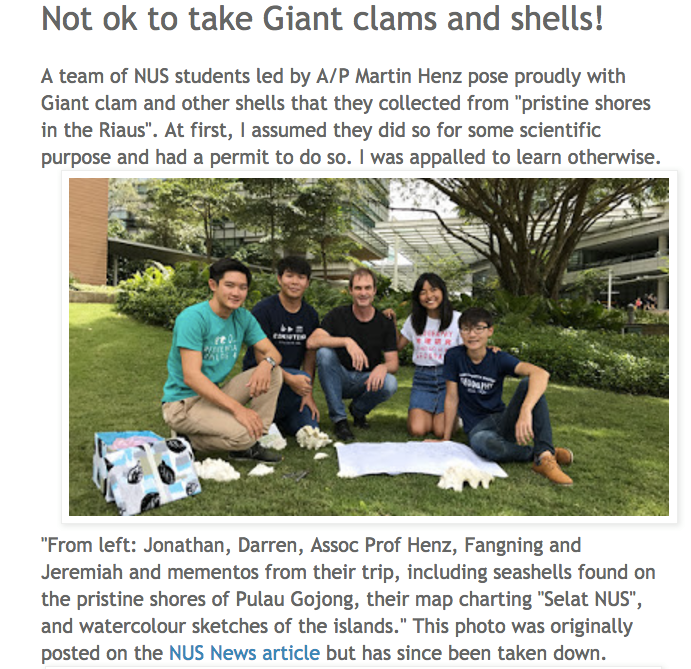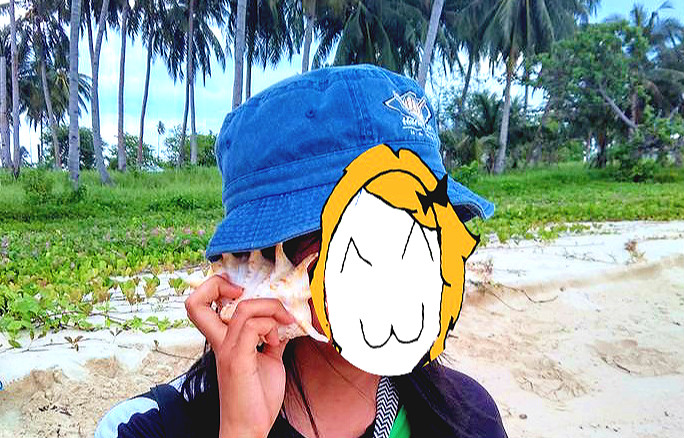Shell-collecting is a common enough thing most of us do when we visit or take a walk on the beach.
For many of us, as long as we remember, our parents would bring us on walks, picking up shells and collecting them to wash clean and display proudly at home, as souvenirs from our holidays.
Just like the group of National University of Singapore students who went on a trip with a professor of theirs to a cluster of Indonesian islands, and brought back a few giant clam shells home as souvenirs.
 Screenshot from Wild Shores of Singapore
Screenshot from Wild Shores of Singapore
Unfortunately, we've all been wrong all our lives. Shells should be left where they are spotted in the sand, or in the waves of the sea, and here's why:
According to The Guardian, seashells are more than just an ornament or souvenir; they are crucial to other marine creatures' survival, as well as our coastal landscape:
"Seashells are an important part of coastal ecosystems: they provide materials for birds' nests, a home or attachment surface for algae, sea grass, sponges and a host of other microorganisms. Fish use them to hide from predators, and hermit crabs use them as temporary shelters. The removal of large shells and shell fragments also has the potential to alter the rate of shoreline erosion."
In the case of the NUS students who brought back shells, it's actually illegal under Indonesian law to collect the shells of endangered species such as the giant clams:
“Any and all persons are prohibited to (a) Catch, transport, and trade in a protected animal in a live condition; (b) Keep, possess, transport, and trade in a protected animal in a dead condition; (c) Transfer a protected animal from one place to another, within or outside Indonesia (d) Trade, keep or possess bodies, or other parts of a protected animal or the goods made of parts of the animal, or transfer from one place in Indonesia to another, within or outside Indonesia”. Penalties that can be imposed when these laws are broken can total fines of up to IDR 100,000,000 (~USD 10,000) and imprisonment for up to five years. (Emphasis ours)
Learning from the incident
Thankfully, NUS School of Computing and Faculty of Engineering Associate Professor Martin Henz, who organised the trip, has come forward to account for the unintended negligence. He told Mothership.sg that the team would be more cautious with the planning of future voyages and be more conservation-minded:
We are now working with NUS’s marine science and conservation experts to better understand this matter. The affected shells will be turned over to Agri-Food and Veterinary Authority of Singapore for action as is necessary. This has been a learning experience for all involved, and we will be more mindful of our actions in the future to not leave anything behind nor remove anything from nature.
But now you know — when in doubt, don't pluck, pick up or pull anything from any part of nature that you might happen to visit or pass through. The best guide to follow would be the old saying regarding nature: take nothing but photos, leave nothing but footprints.
Top photo edited from Across The Equator Facebook
Related articles:
Learn about giant clams from this marine biologist — the only S’porean TED Fellow at TED2017
If you like what you read, follow us on Facebook and Twitter to get the latest updates.
If you like what you read, follow us on Facebook, Instagram, Twitter and Telegram to get the latest updates.
